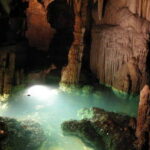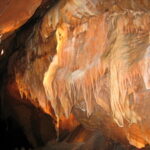Arizona! The first things that comes to mind are deserts, cactus and triple-digit temperatures. These descriptive words are accurate, as a good portion of Arizona is desert. But Arizona is a state that offers a great deal more that just arid terrain and sweltering summers.
The Grand Canyon, one of the Seven Wonders of the World, is located in the northern part of the state. The Colorado River’s relentless erosion has exposed over 2000 million years of geology to visitors and scientists from around the world. Other Arizona geological treasures include the Barringer Meteor Crater impact site, the Petrified Forest, the Painted Desert and the incredibly beautiful formations near Lake Powell, most notably,The Wave.1,2,3
A lesser known fact about this state is that a little over a quarter of Arizona is forested land. The world’s largest stand of Ponderosa pines is located, again, in northern Arizona. The tree line begins near Flagstaff and moves into the White Mountains area in the state’s northeastern corner
But what visitors and many residents of the state are not aware of is that Arizona has over 1000 documented caves, karsts and caverns. Organizations dedicated to locating and documenting Arizona’s caves predict an estimated 3000 more caves will eventually be explored and added to the list of current cave locations. Scientists, including geologists, archeologist and experts in cave preservation, have collected an incredible amount of information from the different type caves in desert and mountainous areas of the state. An impressive list of caves and their topographical locations and coordinates are found in “Caves of Arizona: An Index To The Topographic Maps on Which They Are Located”, by Jack D. Mount.4
A cave or cavern is the property of the owner of the land on which it is located. It is necessary to get the owner’s permission to explore the area. According to the Arizona Cave Survey, all caves and caverns in Arizona are protected by state law and, if ignored, fines can be as much as $150,000.
The majority of Arizona’s cave sites are found on government land; the Bureau of Land Management, United States Forest Service and the Bureau of Indian Affairs, for example. A very small percentage are found on private land.
The paleo-geologic history of Arizona tells of horrific volcanic activity. At one point, an inconceivable burst of energy caused an up-thrust which all but cut the state in half. The result is a distinct formation now known as the Mogollon Rim. To the north of the rim lays the Colorado Plateau which is dotted with docile proof of active volcanoes. Mt. Humphreys, thrusting into the tundra zone at 12, 637 feet, is part of the San Francisco Peaks range that consists of a series of prehistoric volcanoes. Volcanic activity created most of the caves in the northern part of Arizona.
Lava River Cave, a lava tube, is located about 45 minutes north of Flagstaff. It is 3,820 feet long, the entrance an unassuming opening in the ground. The cave’s average temperature is around 34 degrees so it is not unusual to find ice throughout the cave in both summer and winter. Flashlights or lanterns are necessary in the tubes pitch black depths. The tube was formed when the top, sides and bottom of a lava flow cooled and hardened on the outside while molten lava continued flowing inside the walls. Scientists date Lava River Cave at around 700,000 years old.5
Moving farther north and west, the Grand Canyon Caverns is what is known as a “dry cavern”. It is the 3rd largest of its kind in the world. There is no water here to seep through limestone and gradually change the cavern’s interior. As it plunges over 20 stories down, layer upon layer of geological periods such as Jurassic, Cretaceous, and Devonian are revealed.6 This is another favorite destination for scientists, including those who study fossils.
Located in southern Arizona, Colossal Cave offers speleologists an example of a dormant cave. Originally formed by water seeping through limestone, this now dry cave maintains its impressive display of stalagmites and stalactites. Located 22 miles southeast of Tucson, it was often used by outlaws as a hideout in the late 1800’s. But long before its 3700 ft elevation made it the perfect place to hold off the law, prehistoric cultures had made it their home. Very little of this cave has been explored.7 Its passages will be a source of continued exploration and study for many years.
One exceptional cavern, originally owned by the Kartchner family, is now an Arizona State Park. It took over ten years from the time the Arizona legislature approved the acquisition of the land in 1988 until all parties, including world-renowned specialists in the preservation of caving environments, had done everything they could to insure the caverns would remain as pristine as possible.
In a written history of the discovery and events leading up to the opening of the James and Lois Kartchner Caverns State Park in November, 1999, Randy Tufts and Gary Tenen, who discovered the caverns, tell the amazing story of the need to protect the caverns location. Even more amazing is the telling of the commitment to secrecy by everyone involved in the process that extended even into the halls of the Arizona House and Senate. Many challenges had to be overcome to open this natural wondet.7
The Caverns’ Big Room and the Rotunda/Throne Room display colorful stalagmites and stalactites, soda straws, white columns and helictites. Names like Totems, “turnip” shields and brushite moonmilk describe other world-class formations that have spent eons developing within the cave’s soaring ceilings and massive chambers.
Kartchner Caverns’ Big Room is closed from late April until mid-October to protect the myotis bats that return there every year to have their young. This ritualistic migration from Mexico must be protected in order to maintain the caverns’ delicate ecosystem. Other areas of the cavern remain open year round. Located 12 miles from Benson, Arizona, Kartchner Caverns is listed among the top ten caverns in the world.
Grand Canyon Caverns, Colossal Cave and Kartchner Caverns offer guided tours. The lava tube is a self-guided tour. Always remember that while caving can be an amazing adventure, an inexperienced person should never go into a cave or cavern without an experienced guide.
If you are interested in learning more about Arizona’s caves and caverns, contact the Arizona Region Association or the National Speleological Society. A list of grottos, individual groups of cavers representing different areas of the state, can be found on the Arizona Cave Survey website.*
1 www.americansouthwest.net
2 www.meterocrater.com
3 www.petrified.forest.national-park.com
4Reprint of an article appearing in: Pimeria: Bulletin of the Map Collection, University of Arizona
Library, vol. 23, nos. 4&5, September-December 1992, pages 1-8 [Z881.A7 U55 Main & Spec. Coll.]
5 www.fs.fed.us/r3/coconino/recreation/peaks/lava-river-cave.shtml
6www.infoplease.com/ipa/A0001822.html
7www.arizona-leisure.com/colossal-cave-arizona.html
8 www.arizonacavers.org, “Discovery and History of Kartchner Caverns ,Arizona”, written by Randy Tufts and Gary Tenen, published in the Journal of Cave and Karst Studies, August 1999.
9 arizonacaves.org*




